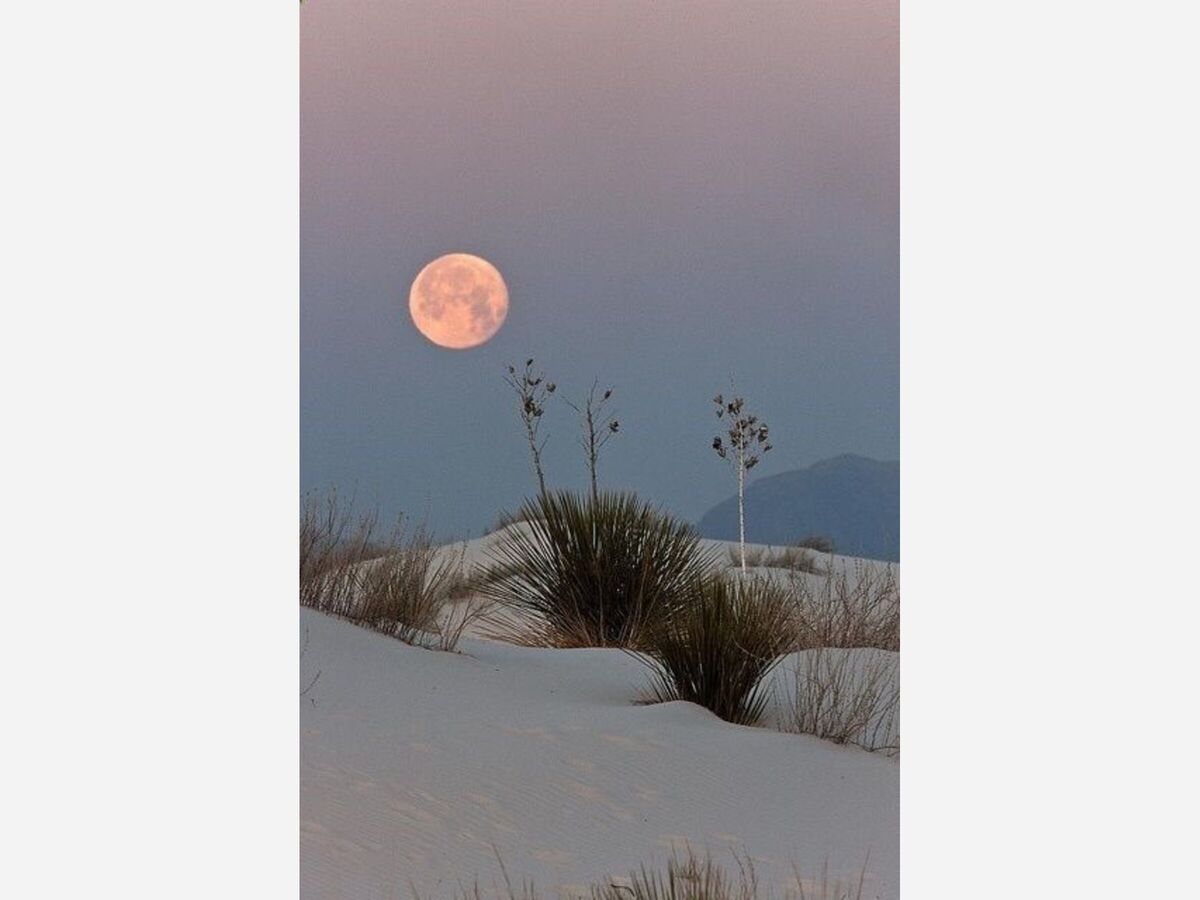Image


April Full Moon 2021: 'Super Pink Moon' rises April 26th...
The full moon in April is known as the Pink Moon, though it has nothing to do with the moon's actual color. The term is coined from creeping phlox, an herb moss that is one of the earliest springtime flowers to bloom. Other names for April's full moon include the Fish Moon, Sprouting Grass Moon, and the Egg Moon.
During the April full moon tonight and early Tuesday, the moon will be about 222,064 miles (357,378 kilometers) away from Earth, that is about 8% closer than the distance of an average full moon (240,000 miles or 384,400 km). This fluctuation in the full moon's distance is caused by the fact that the moon's orbit around the Earth isn't perfectly circular but very slightly elliptical. If the full moon occurs closer to the perigee (the closest point to Earth on this slightly elliptical orbit), it can appear bigger than if it occurs closer to the apogee (the farthest point).
The super pink moon gets its name from the 1930s, when the Maine Farmers’ Almanac first published the Native American moon names.
Many of the names attributed to the April full moon are associated with the introduction of spring and influenced by the return of regular crop harvesting, farming and fishing.
The pink moon is named after a herb known as moss phlox, creeping phlox or moss pink, and is one of the earliest signs of spring.
Although modern astronomy has adopted this name for the large, April moon, there are other variations across the US and the world.
Sprouting grass moon, the egg moon and the breaking ice moon are all names for the super pink moon, signifying the end to the northern hemisphere’s winter months.
In Eastern Christianity, which follows the Julian calendar, the April full moon – known as the Paschal full moon – indicates when Easter will take place.
Psychic and intuitive astrologer Rose Smith said supermoons are a time of transformation, rebirth and renewal.
“Spiritually, supermoons are all about transformation and bringing up subconscious content for us to deal with – it means it’s time for a purge,” Ms Smith told The New Daily.
“What this means for you as an individual is reflected by your star sign – however, in general terms it’s a very good time to meditate.
“Have some quiet time for self-reflection, and avoid distractions of the outside world.”
Astrology nuts and those looking for a good excuse for introspection and goal setting are encouraged to harness the super pink moon to help them get the ball rolling.
An early list of "Indian month names" was published in 1918 by Daniel Carter Beard in his The American Boy's Book of Signs, Signals and Symbols for use by the boy scouts. Beard's "Indian" month names were:
Such names have gained currency in American folklore. They appear in print more widely outside of the almanac tradition from the 1990s in popular publications about the Moon. Mysteries of the Moonby Patricia Haddock ("Great Mysteries Series", Greenhaven Press, 1992) gave an extensive list of such names along with the individual tribal groups they were supposedly associated with. Haddock supposes that certain "Colonial American" moon names were adopted from Algonquian languages(which were formerly spoken in the territory of New England), while others are based in European tradition (e.g. the Colonial American names for the May moon, "Milk Moon", "Mother's Moon", "Hare Moon" have no parallels in the supposed native names, while the name of November, "Beaver Moon" is supposedly based in an Algonquian language).
The individual names (some inconsistent) given in Farmers' Almanac, which is not authoritative, include the following:
Regardless of what you call the moon or what your heritage or folklore tells us what is fun is to unplug, look up at the sky and enjoy the wonder, beauty and amazement of the pink moon tonight.
Credit as sources Cassandra Tassios, The Old Farmers Almanac and Wikipedia.